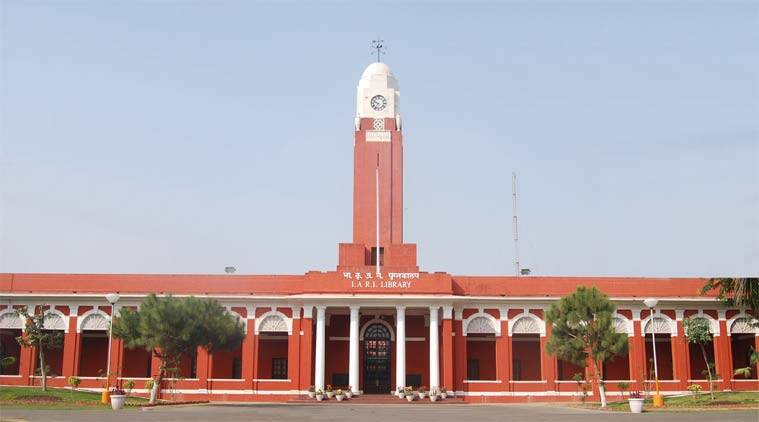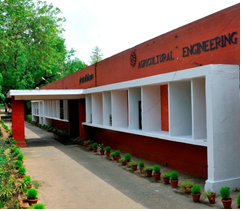About IARI
The journey of Indian Agricultural Research Institute (IARI), popularly known as Pusa Institute, began in 1905 at Pusa (Bihar) with the generous grant of 30,000 pounds from an American philanthropist, Mr. Henry Phipps. The institute was then known as Agricultural Research Institute (ARI) which functioned with five departments, namely Agriculture, Cattle Breeding, Chemistry, Economic Botany and Mycology. Bacteriology unit was added in 1907. The name of ARI was changed to Imperial Institute of Agricultural Research in 1911 and, in 1919 it was renamed as Imperial Agricultural Research Institute. Following a devastating earth quake on 15th January 1934, the institute was shifted to Delhi on 29th July 1936. Post independence, the institute has been renamed as Indian Agricultural Research Institute (IARI).
During the fifties, the advancement of scientific disciplines constituted the core program of IARI and provided the base for its fast expansion in the 1960’s and 1970’s. It attained the status of a Deemed University in the year 1958. The green revolution that brought smiles to millions of Indians bloomed from the fields of IARI with the development of famous wheat varieties which contributed an estimated on billion tones of addition production. As the Mother of several ICAR institutions, IARI continues to be the leading institution for agricultural research, education and extension in the country.
The present campus of the Institute is a self-contained sylvan complex spread over an area of about 500 hectares (approx. 1250 acres) and located about 8 km (5 miles) west of New Delhi Railway Station and about 16 km (10 miles) east of IGI Airport (Palam). The location stands at 28.08 0N and 77.12 0E, the height above mean sea level being 228.61 meters (750 feet). It is adjacent to hillside road.
Currently, the Institute has 20 divisions 5 multi-disciplinary Centres situated in Delhi, 8 regional stations, 2 off-season nurseries, 3 All India coordinated research projects with headquarters at IARI and 10 national Centres functioning under the all India coordinated research projects. It has the sanctioned staff strength of 3540 comprising scientific, technical, administrative and supporting personnel.
About Division of Agricultural Engineering
The Division of Agricultural Engineering was established in 1945 to develop and introduce appropriate machinery, implements and soil water conservation systems in Indian agriculture. Subsequently, postgraduate teaching and research on these aspects were added to the mandate of the Division. With the establishment of Water Technology Center in 1972, the soil and water conservation research component was transferred to the Water Technology Center, although teaching in this sub-discipline continued to form an integral part of the P.G. teaching of the Agricultural Engineering Division. The Division has the mandate for conducting strategic research on design and development of technologies/equipment in the area of Farm Machinery & Power, Agricultural Processing and Structures, Protected Cultivation, Soil and Water Engineering and Renewable Energy Sources with extension of technologies to farmers and entrepreneurs. The Division also provides Post Graduate teaching.
Mandate
- Research on development of technologies / Precision Equipment in the area of Farm Machinery and Power, Precision farming, Post-Harvest Engineering, Protected Cultivation and Renewable Energy.
- Post graduate studies in the disciplines of Farm Power and Equipment, Agricultural Structures and Process Engineering and Soil and Water Conservation Engineering.
- Testing of farm machinery testing under the aegis of MOA&FW, GOI
- Extension of improved equipment / technology :
- Agricultural machinery promotion through extension and agro industries liaisoning programmes and licensing of technologies
- Production and supply of prototype for improved agricultural equipment under revolving fund
- Training of farmers, rural artisans extension workers, technical officers and subject matter specialists on agricultural engineering & technologies.
Research Programmes & Services
The division of Agricultural Engineering, IARI has been engaged in research and development of technology in the area of Farm Machinery and Power, precision farming, Drone and Robotic development for Agriculture, Post-Harvest Engineering, protected Cultivation and Renewable Energy. The division also has close collaboration with industries, entrepreneurs and farmers. The developed technologies have been disseminated through demonstration on farmers field and revolving fund scheme. The division upgrades the skill of farmers, entrepreneurs, manufacturers by organising the training and workshop etc.
Research
A number of technologies and processes have been developed by the Division and few of them have been commercialized under different schemes particularly through Revolving Fund Scheme. These machines resulted in increased efficiency, reduced drudgery and were found cost effective. Some of the important equipment for seeding and planting include Okra Planter, weeder-cum-seeder, pre germinated paddy seeders, two-row seed drill, and potato planter. The animal feed block making machines included Complete Cattle feed block formation machine, Mobile Feed Block Formation Machine and Feed block making machine (Stationery Low capacity), Urea molasses mineral block (UMMB) formation machine, Feed and fodder mixer and Feed & fodder crusher. The accelerated compost making machines included Pusa compost Turner cum mixer, Pusa Automatic compost sieving Machine and Pusa Compost Loader. The machines related to dry land agriculture included aqua ferti. seed drill and mechanical hydrogel applicator. The recent effort is on design and development of suitable cost effective machines for vegetable cultivation. The equipment developed for post-harvest operations included multi crop vegetable-cum-fruit grader, paddy thresher, paddy sheller, rice polisher, powered winnower, sunflower seed decorticator, and vegetable seed extractor. In addition, a technology for production of instant dal, development of Postural Dynamometer and safety devices for chaff cutter are also some of the important contributions. Appropriate designs of greenhouses for different agro climatic regions of India were also developed in the division.



